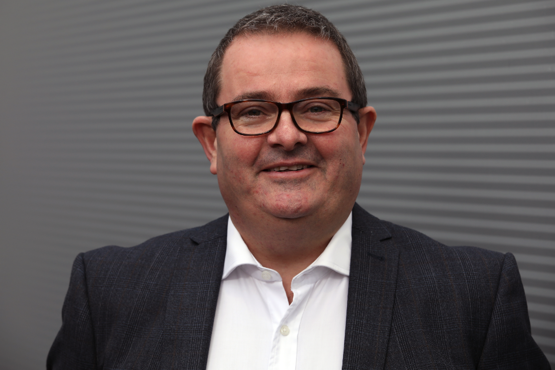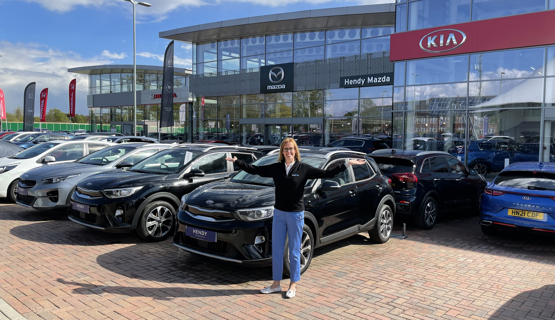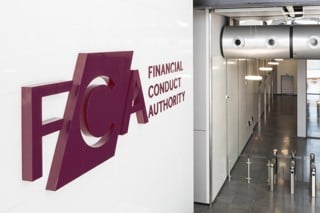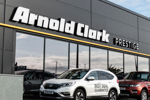Talk of Mobility as a Service (MaaS), car subscriptions plus a new era and approach to vehicle funding seems to have quietened down considerably of late.
The noise and headlines for subscriptions appears to have taken a back seat to a widely fluctuating used car market, new challenger brands looking for a slice of the pie and most recently concerns around historic discretionary commission paid to dealers and motor finance brokers voiced by the Financial Conduct Authority (FCA).
As one insider tells AM: “Now is not the time to be getting into subscriptions and pushing new ways of doing things.
Talk of Mobility as a Service (MaaS), car subscriptions plus a new era and approach to vehicle funding seems to have quietened down considerably of late.
The noise and headlines for subscriptions appears to have taken a back seat to a widely fluctuating used car market, new challenger brands looking for a slice of the pie and most recently concerns around historic discretionary commission paid to dealers and motor finance brokers voiced by the Financial Conduct Authority (FCA).
As one insider tells AM: “Now is not the time to be getting into subscriptions and pushing new ways of doing things.
“It’s gone very quiet, which means it’s either not working or it’s working really well and car manufacturers don’t need to make any more noise about it.”
There’s no sign of subscriptions significantly eating away at the share of funding from more traditional methods like personal contract purchase (PCP), hire purchase (HP) or personal contract hire (PCH). There are still car manufacturers that are offering subscriptions with brands such as Volvo and Hyundai both folding in this new way of funding as part of the mix. There are also new brands like the Geely-owned Lynk & Co where subscription is at the core of how vehicles are offered to consumers.
David Betteley, community head – auto finance at Asset Finance Connect and chairman at car subscription software company Tomorrow’s Journey, believes there is still the appetite among customers for more flexibility, where consumers don’t necessarily want to be locked into a three- or four-year finance deal.
He says: “I think where we’re at is trying to find that right balance between the cost and flexibility. Due to the cost of some of the subscriptions it can be seen as more of a premium type of product.”
Duncan Chumley, Mycardirect chief executive, has been leading his subscription business for the past three years. He says it can be a challenging concept, because it blends rental and traditional finance.
Chumley says: “Some have played with subscriptions, but it’s not been at the core of what they’re trying to achieve. Having run Mycardirect for three years now, I know it takes 24 hours a day to get it right.
“In any new market, it can take a bit of evolution over time before you see it become mainstream. From our side, that evolution continues.”
When comparing prices between a vehicle on subscription and the equivalent car on a PCP, there can be a bit of a gap, but this doesn’t account for the built-in extras that are included with subscriptions, such as servicing, roadside assistance, MOT and, in some cases, insurance. While original equipment manufacturers (OEMs) may have subscriptions availability, dealers are also developing their own offerings. This requires a reconfiguration of their finance and insurance (F&I) processes as subscription models necessitate flexible financing options and user-friendly digital platforms to cater to changing customer needs.
An alternative to daily rental
Hendy Group launched its own subscription service in partnership with Karzoom in September 2022 and was one of the first dealer groups to launch in this market segment in the UK. Mark Busby, Hendy Group director of commercial operations, explains that for Hendy Go, he wanted to create something that could be an alternative revenue stream to daily rental.
He says: “We quickly realised as a business that daily rental is quite intensive in terms of resources required. If you have a vehicle going in and out over 24 hours, it needs to be checked in and checked out and it needs to be cleaned. It became apparent quickly that it wasn’t a model we wanted to get involved in.
 “More than anything I was curious about who would subscribe to a vehicle, rather than buy one or fund it in a different way. This was as much a market research initiative, as it
was an incremental revenue initiative.”
“More than anything I was curious about who would subscribe to a vehicle, rather than buy one or fund it in a different way. This was as much a market research initiative, as it
was an incremental revenue initiative.”
Hendy has worked in partnership with Karzoom to develop the offering, which has started small with a subscription fleet of around 20 vehicles. This has been intentional, with Busby saying he wanted to scope out the offering and get the customer experience and back end systems right, without taking the residual value risk on a fleet of, say, 1,000 vehicles.
He says: “I’ve been able to absorb it into our existing infrastructure without having to invest in any extra headcount.
“Importantly, from our product offering, we have a really credible subscription service we can offer. It could give us a competitive advantage if the appetite for subscriptions continues to grow. We could dial this up very quickly if we wanted to.”
Importantly, Hendy’s work with its Go product, which offers flexible one-to-three month subscriptions, has been delivering a profit per vehicle after defleet. Busby says: “As we continue to pivot from a pull to a push new car market, I think there will be more options to add vehicles to the Go fleet.”
Having a dedicated new car subscription fleet has also been the best route for Hendy. The business did look at whether subscriptions could be a good avenue to make money out of ageing used stock, but the reality was that the business still wanted to sell those used vehicles.
Subscriber behaviour
Hendy has seen a mix of subscription customers where some have a new car on order and have cashed in on their part-exchange, particularly when used car prices had been at historic highs. Busby is also seeing corporate customers that don’t want to commit to a long-term lease when building teams and waiting to see if new staff members pass their probationary period.
There have been some private customers that are looking for more flexibility, as well as electric vehicle (EV) customers that are looking to test multiple brands and models to see what’s right for them.
Busby says: “We’ve found timing is really important with subscriptions too. You have to be ready to mobilise within five days of an enquiry coming through.
“When someone is ready to subscribe, there’s generally a trigger and we’ve found that we need to get something sorted for them within that five day period as the sweet spot.”
Subscription, ultimately, fits in with Hendy’s leasing business and it’s here where Busby envisions it being further integrated into the fleet team’s tool kit of options for customers. It will still be promoted as an option for retail customers too at the point of sale, particularly where there’s a longer wait for a new car factory order, but Hendy Go will be proactively promoted through the fleet team.
Meanwhile, Mycardirect has more of a retail focus, with around 70% going to private customers and the remainder to businesses. The company now has around 2,000 members or subscribers, with the average term of subscription at 13.2 months.
Around 20% of Mycardirect’s subscribers are in EVs. Chumley says there is a trend for EV customers to swap their vehicles more frequently to try different products, but the majority of customers are getting to the end of their original subscription term before renewing or changing their car.
 Not only is Mycardirect facilitating customers directly online, but it is now also working with
dealerships to either offer a white label or referral service. There might be a customer at a dealership that wants to try a car for three months and
Mycardirect can help facilitate that. Chumley says: “It works very much like it would if a dealer group was working with a leasing broker.
Not only is Mycardirect facilitating customers directly online, but it is now also working with
dealerships to either offer a white label or referral service. There might be a customer at a dealership that wants to try a car for three months and
Mycardirect can help facilitate that. Chumley says: “It works very much like it would if a dealer group was working with a leasing broker.
“They’re always looking for cars and subscriptions can offer another route to market for their cars and customers.”
Total cost of ownership
Making sure customers are aware of the total cost of ownership (TCO) for their car is one of the biggest education challenges facing the future success and growth of subscriptions.
This includes breaking down the cost of servicing, insurance, breakdown cover and MOT over the course of a 12-month period to get a monthly cost, on top of the price of the car itself. Comparing subscriptions like-for-like with PCHs or other funding types would also require factoring in deposits and advanced rentals.
Chumley says: “As soon as you look at pricing month-to-month over a longer term, subscriptions can be similar or sometimes cheaper than an equivalent leasing deal.
“Subscriptions can be expensive if you subscribe for shorter periods, but if it’s over a longer period, it can be comparable.
“It’s competition to the other funding methods, but the real goal is to offer something that suits the needs of customers better. We see subscriptions sitting alongside all the products in the marketplace as another option.”
Login to continue reading
Or register with AM-online to keep up to date with the latest UK automotive retail industry news and insight.






















Login to comment
Comments
No comments have been made yet.